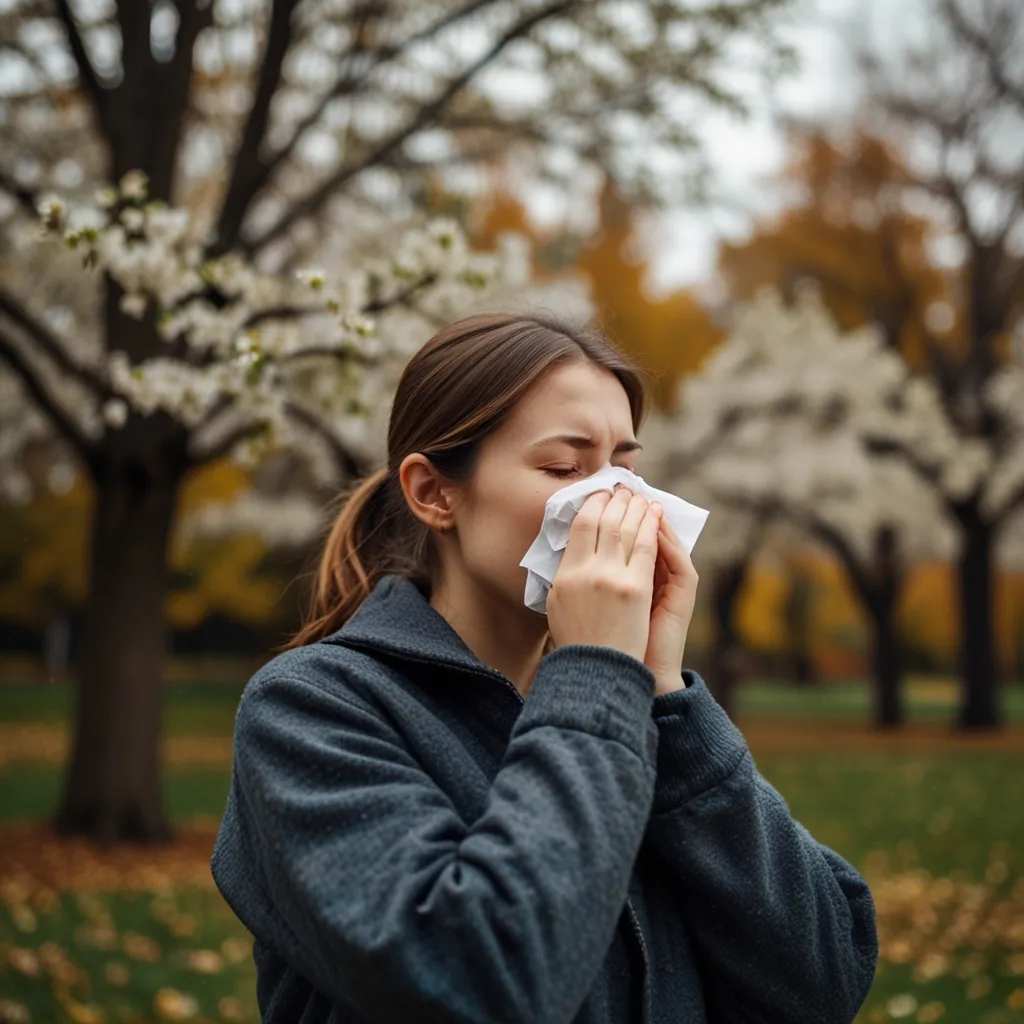Seasonal allergies can turn those lovely spring and autumn sceneries into a sneezy nightmare. We’ve all been there – the constant sneezing, runny nose, itchy eyes. It’s frustrating. But knowing a bit more about what causes these allergies and how to handle them can make a world of difference. So, let’s dive into everything you need to know about seasonal allergies and how to make them a lot more manageable.
First off, what’s actually causing these annoying symptoms? Seasonal allergies, also known as hay fever or allergic rhinitis, pop up when your immune system overreacts to allergens like pollen. These allergens, mainly from trees, grasses, and weeds, are pretty light, so they float around easily, landing straight into your nasal passages and eyes.
The timing of your allergy flare-ups mainly depends on where you live. For example, in many parts of the U.S., spring allergies kick off around February and can hang around until early summer. Trees are the first to drop their pollen, followed by grasses in late spring and summer, and then weeds like ragweed take over in late summer and fall. If you’re in a tropical area, grass pollen might be a year-long problem. Some areas with milder winters can see earlier pollen activity, and rainy springs? They’ll just boost plant growth and prolong those allergy symptoms.
Heading into fall, especially on the East Coast and in the Midwest, ragweed becomes the main culprit. It starts blooming in August, peaking around early to mid-September. But it’s not just ragweed battling for your sinuses’ attention—plants like burning bush, tumbleweed, and Russian thistle are also offenders.
The local climate plays a massive role in how bad your symptoms get. Cool nights paired with warm days? Perfect pollen weather. Meanwhile, molds love heat and humidity. Pollen counts usually spike in the mornings. Rain does help by washing away pollen, but right after the rain? Pollen counts can actually soar. Windy days just push all those allergens around, making things worse. Moving to a new place probably won’t help much either since allergens are everywhere.
Now, figuring out if you have seasonal allergies doesn’t have to be a big mystery. If you notice yourself repeatedly sneezing, dealing with a runny or blocked nose, having watery or itchy eyes, or an itchy throat and ears at certain times of the year, it’s likely allergies. A trip to the doctor for a skin prick or blood test can pinpoint the exact culprits.
What can you do to manage these symptoms? Combining avoidance tactics with medication works well. Keeping tabs on pollen and mold counts can help you plan your day. Weather reports often include this info during allergy seasons, and there are handy apps and websites that offer daily pollen counts.
On days when pollen counts spike, it’s best to stay indoors, particularly in the late afternoon and early evening when levels are highest. Close your windows and use air conditioning to keep your home cool and allergen-free. Regular cleaning can also help – think vacuuming with a HEPA filter and washing your bedding in hot water weekly. Allergen-proof covers for pillows and mattresses can be a lifesaver.
After being outdoors, it’s a good idea to shower and change your clothes to wash away any pollen. Using a saline nasal wash can also clear out the allergens from your nose. And when tackling outdoor chores like mowing the lawn, wearing a NIOSH-rated 95 filter mask can reduce exposure. Taking your medication beforehand can help calm symptoms too.
When it comes to medications, there are plenty of over-the-counter options that can make a big difference. Antihistamines, decongestants, and nasal sprays are great starting points. For more severe symptoms, prescription options like nasal steroids or eye drops might be necessary.
One of the most effective long-term treatments is immunotherapy, commonly known as allergy shots. This involves regular injections of tiny amounts of allergens, gradually reducing your immune system’s reaction. There are also tablets that you can dissolve under your tongue for similar results.
Some people prefer natural remedies to deal with their symptoms. Rinsing your nasal passages with a saline solution is a quick, effective, and inexpensive way to reduce nasal congestion. You can make a simple saline solution at home using water, canning salt, and baking soda. Other natural options like butterbur extract or spirulina have some fans, although their effectiveness isn’t as well-documented.
Small lifestyle adjustments can make a considerable difference too. Avoiding strong chemicals or pollutants can help reduce irritants. If you have pets, keeping them out of your bedroom can lower your exposure to pet dander—a common allergen.
Seasonal allergies don’t have to rule your life. By understanding what triggers your symptoms and incorporating some practical strategies to avoid them, you can enjoy the seasons without the misery. With the right approach, whether it’s spring, summer, fall, or winter, you can live a healthier, happier life. So next time the flowers start to bloom or the leaves start to fall, breathe easy and embrace the beauty without the sneezes and sniffles.






